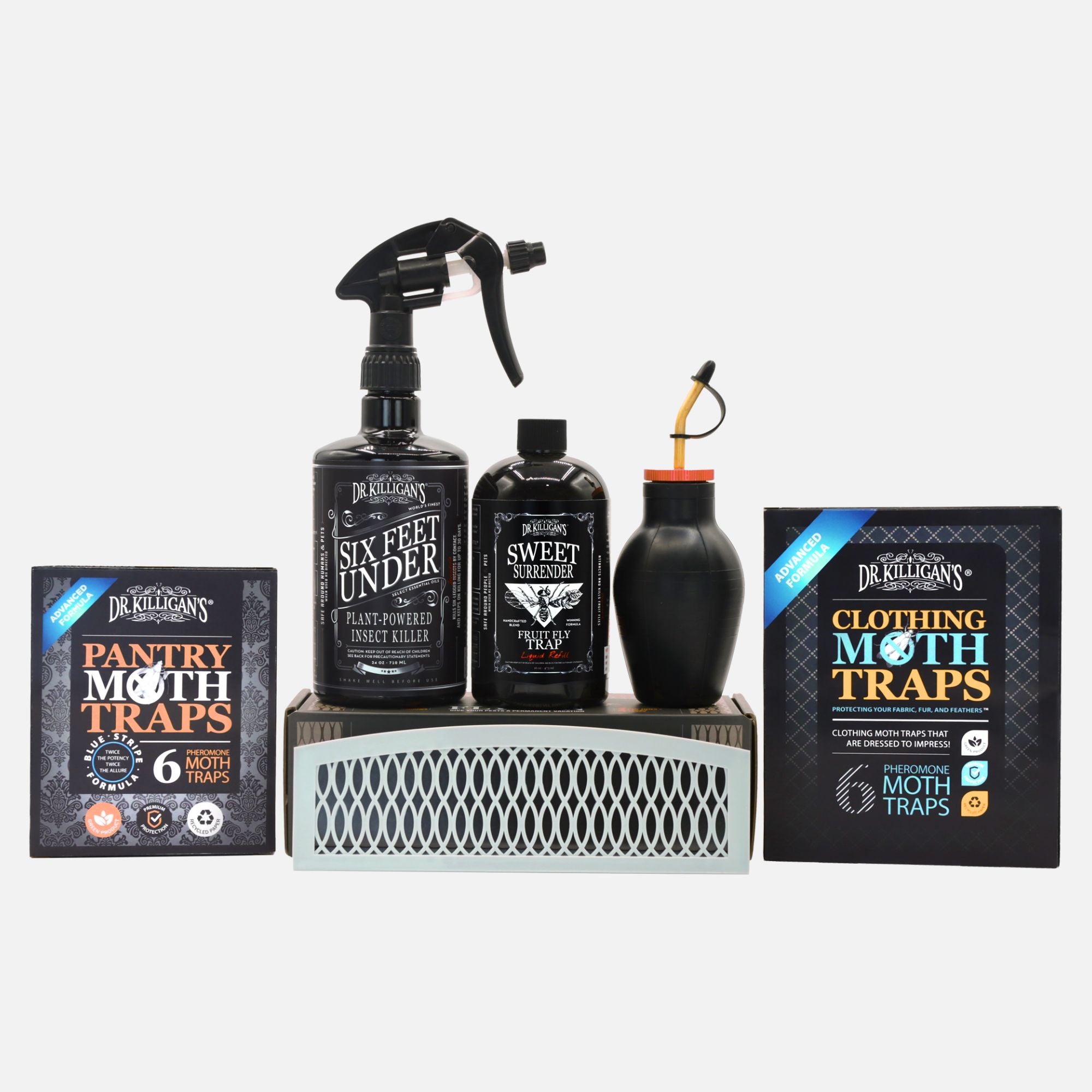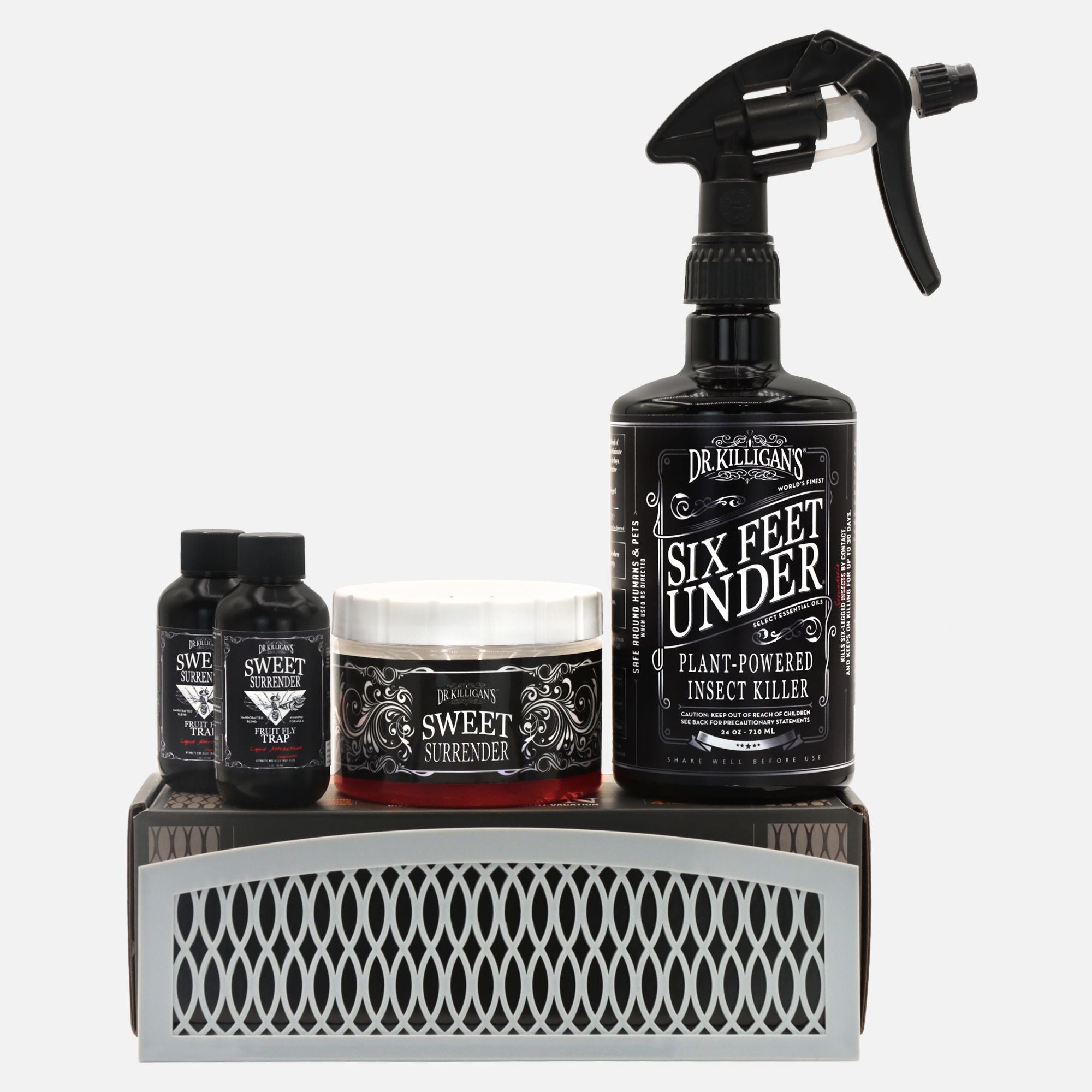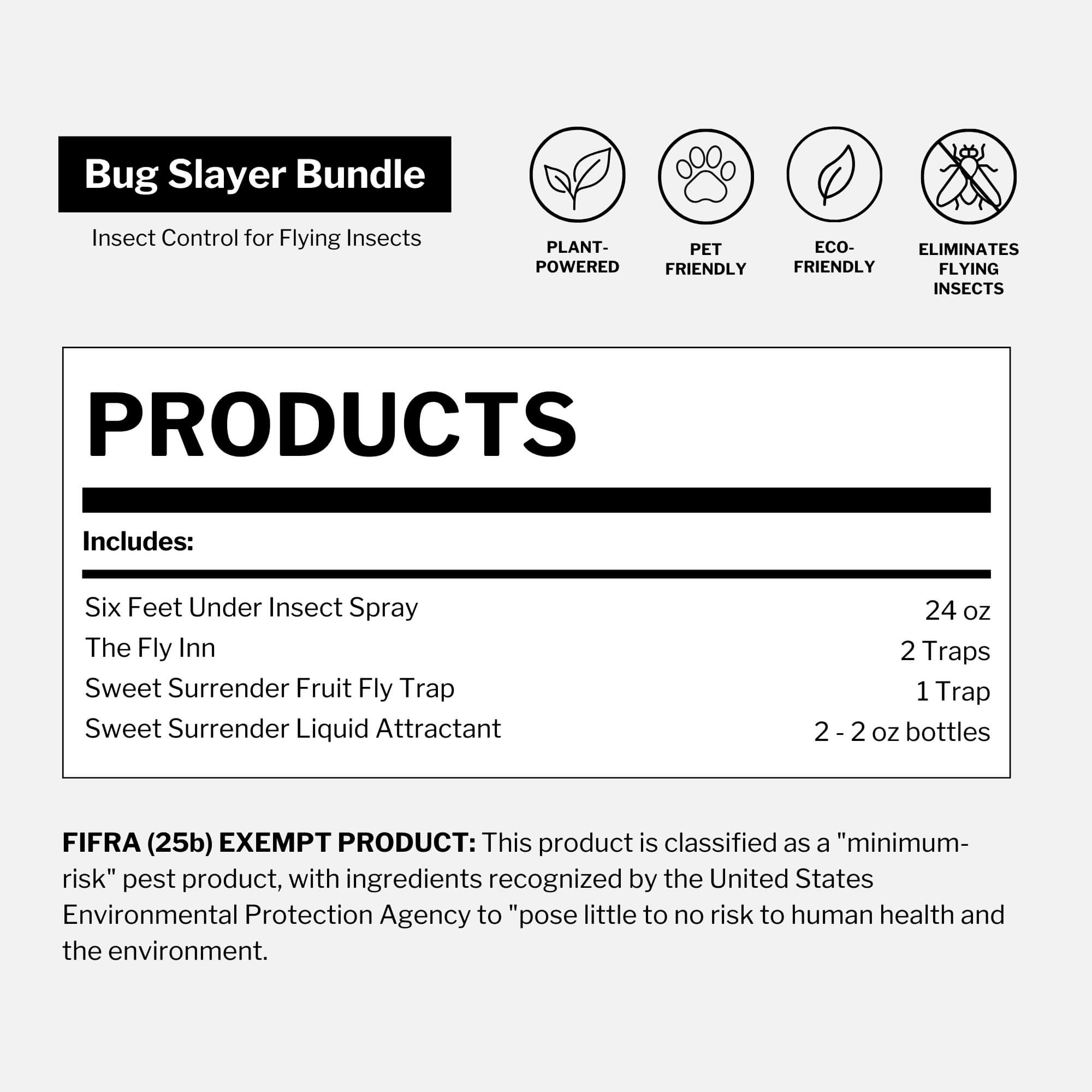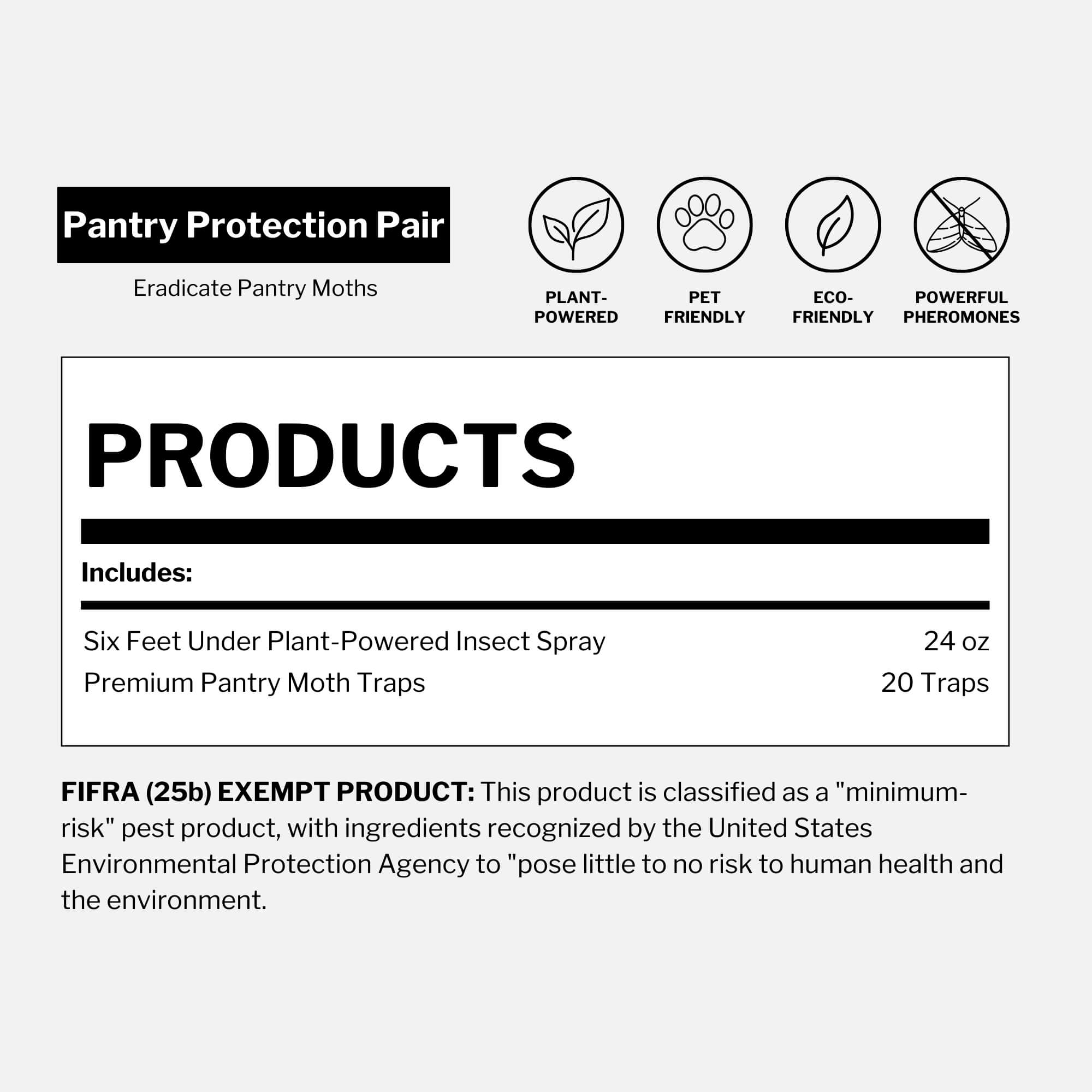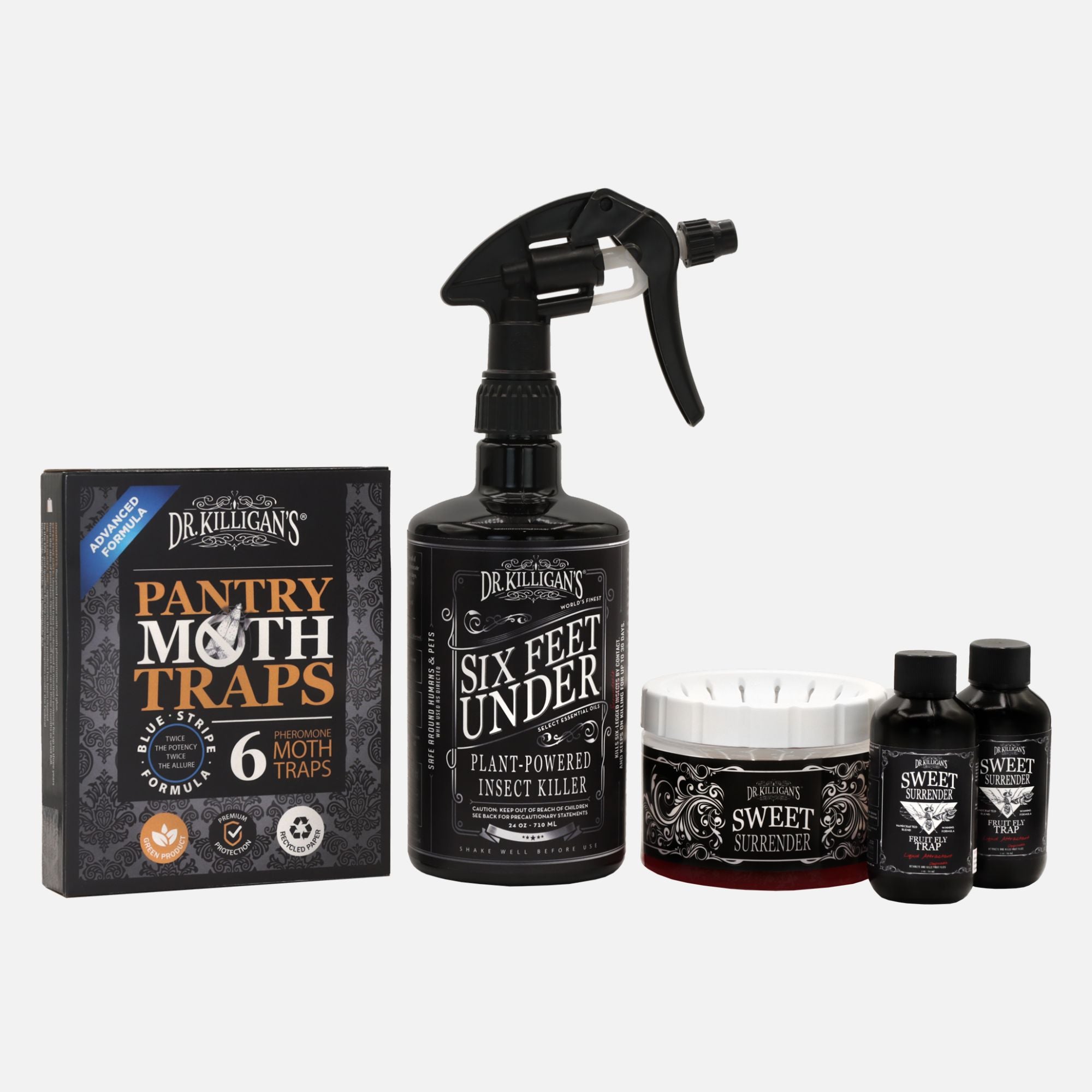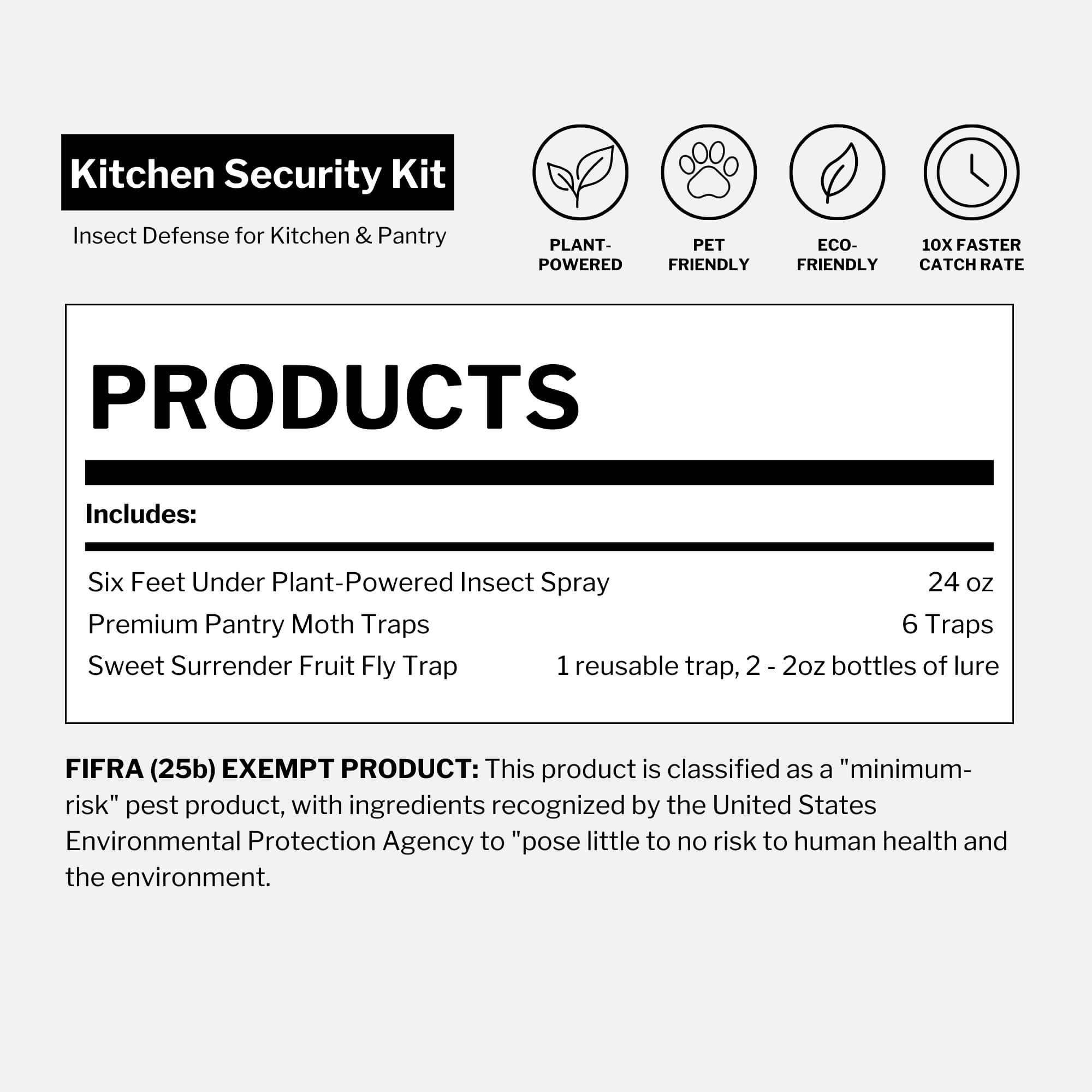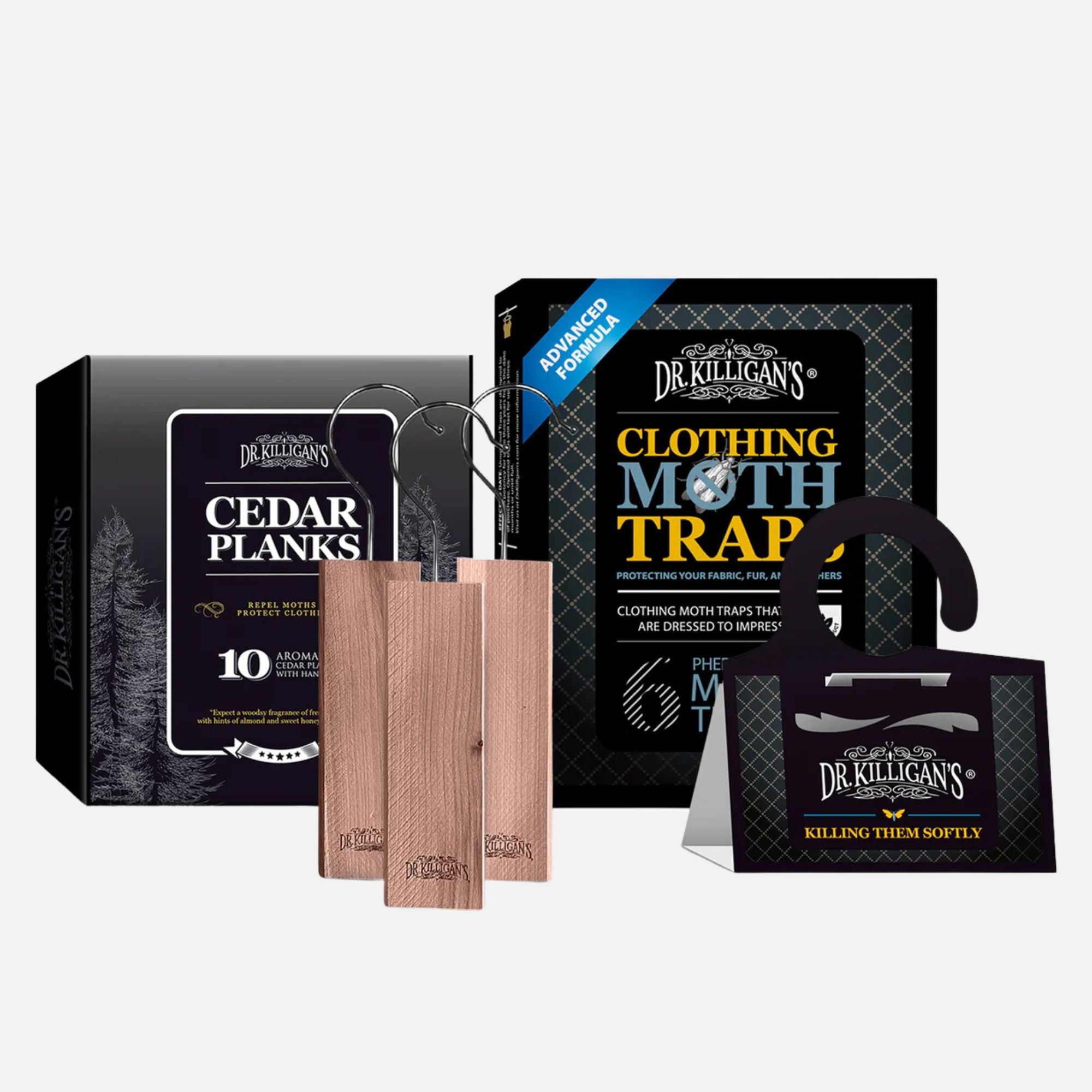Updated on April 19th, 2025
With various options for pest control on the market, it’s difficult to know where to turn. Would a collar be better for flea prevention for my cat? Should I give my dog a pill to keep the ticks away? Do any of these products contain chemicals that can harm my beloved furball?
If you’re searching for pet safe pest control, you’re not alone. Dr. Killigan's provides pest control solutions that are safe for cats, dogs and other pets when used as directed. We offer non-harmful remedies and pride ourselves on being a pet-friendly pest control company. We, too, love our cats, dogs, birds and goats (and various other animals that Dr. Killigan's employees own).
Two pests to watch out for if you have pets
1. Ticks: What you need to know
Ticks are parasitic blood-sucking arachnids: adults are about the size of a sesame seed, while nymphs—or juveniles—are the size of a poppy seed. Ticks do not have wings and are flat and oval in appearance. After feeding, ticks can swell to several times their original size and become more visible.
In all stages of their life, they survive by biting an animal (or you). Unfortunately, these bites can transmit bacteria, viruses or parasites that ticks carry. However, most tick bites do not lead to disease.

If you walk your dog in wooded areas, brushy fields or spots with tall grass and weeds, you’re bound to encounter a tick. These parasites wait patiently, then latch on as your pet passes by. Once attached, a tick burrows its head into the skin and feeds for several days before dropping off on its own.
Note: For information on tick removal, see True or false: Bug myths revealed.
Tick bites are typically painless and may not cause itching. You may not even know your dog was bitten until the tick drops off, often leaving behind a red, inflamed patch of skin.
Though ticks don’t bother cats as frequently as they do dogs, felines are still at risk—especially if they roam outdoors or live in rural areas. After potential exposure, inspect your cat thoroughly. Focus on blood-rich zones like the abdomen and upper hind legs, where ticks commonly attach. (Keep in mind: Ticks can latch on anywhere, so a full-body check is best.)
2. Fleas: What pet owners should watch for
Fleas are parasitic, blood-feeding insects known for their powerful jumps—often described as "flying with their legs". Like ticks, fleas feed exclusively on the blood of mammals—including cats, dogs and humans— and are about the size of a sesame seed. To the naked eye, they appear small, dark and oval-shaped, with hard shells.

Dogs, being social creatures, are bound to pick up fleas at some point. These pests can hitch a ride when your furry friend greets another dog or steps outside. Fleas can come from that bunny hopping across your yard, the squirrel scurrying down the oak tree or even deer and other wild critters.
If your pooch has fleas, you’ll likely know it. Many dogs are allergic to the saliva fleas inject each time they bite—and fleas bite a lot, up to 400 times a day! Allergic dogs often scratch, lick and bite themselves excessively, creating the ideal conditions for fleas to thrive.
Fleas (rather than ticks) are more common in cats and often easier to spot. If your cat is scratching excessively or showing signs of hair loss, she may have fleas. Use a fine-toothed comb and check along the neck, belly and base of the tail. Look for tiny, quick-moving insects or dark specks—aka flea dirt. These are telltale signs of an active infestation.
Available treatments to get rid of pet pests
There are several ways to prevent and treat tick and flea bites in pets—collars, oral meds, sprays, dips, shampoos and powders. Let’s explore what each does and their potential downsides.
1. Collars

Flea and tick collars only protect the area they touch. Unless placed around the neck, belly, tail and legs (which isn’t practical), they don’t offer full-body protection. These collars rely on direct contact with your pet’s skin to transfer chemicals.
Tip: When placing a collar on your pet’s neck, ensure you can fit two fingers beneath it and trim any excess length to prevent chewing or swallowing.
Even when used properly, collars can cause skin irritation. If not trimmed, the extra length may be chewed or ingested, leading to potential poisoning or intestinal blockages. In rare cases, collars can fall off or get caught on objects.
Most flea collars rely on two potent pesticides: tetrachlorvinphos (TCVP) and propoxur. These chemicals are among the most hazardous still legally sold. They’ve been linked to cancer and nervous system damage and leave toxic residues on fur—posing risks to pets and to the people who touch or cuddle them.
TCVP, in particular, is a neurotoxic pesticide the EPA once moved to ban due to risks to children, before reversing course in 2023. Despite known links to developmental and neurological harm, collars containing TCVP remain available from major retailers.
Beyond Pesticides, these collars pose “unacceptable risks” to children.
Bottom line: Always check ingredients—and when possible, choose safer, plant-based alternatives.
What’s the safest pest control for pets? Many pet owners are now turning to safer solutions that skip the harsh chemicals found in collars. Plant-based sprays and powders—like those from Dr. Killigan’s—can help protect your pet without exposing them or your family to toxic residues.
2. Oral Medication
Oral flea and tick medications—administered monthly—are a convenient option for dogs and cats. These chewable tablets or pills can be given directly or mixed into food, minimizing exposure to humans compared to topical treatments or collars. They work systemically to kill ticks and immature fleas, disrupting the flea life cycle.
While many pets tolerate these medications well, some may experience side effects. Occasionally, this includes upset stomach or, more rarely, vomiting. Notably, medications containing isoxazolines—a class of pesticides—have been associated with neurological side effects in some dogs and cats.
The FDA warning on products in the isoxazoline class highlights potential neurological effects such as tremors, ataxia (uncoordinated movements) and seizures—even in pets with no prior neurological issues.
Can this be used on dogs with allergies? If your pup has food sensitivities or skin conditions, oral medications might cause flare-ups. In these cases, natural alternatives may be a safer route—especially those that avoid triggering common allergens.
Currently, there are oral medications available that provide protection for up to 12 weeks. These extended-duration chewables offer prolonged defense against fleas and ticks but may carry the same risks associated with isoxazoline-based products.
Bottom line: Consult your veterinarian to determine if oral medications are suitable for your pet—especially if they have a history of neurological conditions. Always monitor your pet for any adverse reactions after use.
3. Dips & shampoos
There are flea and tick dips and shampoos available for both dogs and cats. These topical solutions kill parasites on contact and help eliminate larvae and eggs. When used correctly, they can provide residual protection for up to 28 days. Fleas may drown during bathing, while ticks are forced to release their grip and are then killed by the insecticidal ingredients.
One common active ingredient in dips and shampoos is amitraz, a formamidine acaricide. Poisoning can occur if a pet ingests the product or if the shampoo is improperly mixed or overly concentrated. Sensitive animals—such as toy breeds, puppies or older pets—are especially at risk.
These products may also contain chemicals with strong odors or ingredients that can irritate the skin, especially if your pet has wounds or existing sensitivities.
Is this safe for cats? Cats are especially vulnerable to certain ingredients—particularly pyrethrins, which are found in many flea dips. Always choose formulas made specifically for cats to avoid toxic exposure.
Bottom line: Flea and tick dips and shampoos can be effective for immediate parasite control, but they carry risks—especially for sensitive pets or when improperly used. Always consult your veterinarian before applying these treatments and follow dilution and application instructions to minimize potential toxicity.
4. Sprays
Flea and tick sprays offer quick action and residual protection, making them useful between baths or before outdoor adventures. Applied topically, these sprays can be effective against parasites.

Caution: Use sprays carefully around your pet's face and avoid contact with other animals in your household during application.
While convenient, sprays can cause side effects in some pets, including skin irritation or, rarely, temporary hair loss at the application site. Secondary exposure to other animals or humans is also a concern.
Common active ingredients in these products include:
- Fipronil
- Imidacloprid
- Methoprene
- Pyriproxyfen
- Permethrin
These chemicals—identified by People for the Ethical Treatment of Animals (PETA)—have been associated with adverse health effects in laboratory animals, such as vomiting, diarrhea, drooling, muscle tremors and seizures.
Bottom line: Always read labels carefully and consult your veterinarian before using sprays, especially if your pet has a history of sensitivity or if there are other animals in the home.
According to PETA, the active ingredients in these solutions... have caused serious health problems in animals in laboratories.
5. Powders

Topical flea and tick powders are dry treatment options designed to kill and repel pests on your pet's coat. Before using them, ensure they are labeled for your specific pet species and appropriate for their age.
If inhaled, these powders can irritate the mouth or lungs—yours or your pet’s. Therefore, use small amounts, rub slowly into your pet’s skin and avoid contact with everyone’s face, mouth and eyes during application.
Labels may warn not to get these substances on your skin, to keep them away from your children and to wash your hands after applying them. Given these warnings, it's worth questioning how safe these powders are for pets, especially as their skin can absorb the same chemicals.
For your cat, ensure that you never use a product containing permethrin or pyrethrin. Pyrethrin is a naturally occurring compound found in dried chrysanthemum flowers. Permethrin is the synthetic and more potent form of pyrethrin, part of the pyrethroid chemical family. Cats are highly sensitive to both ingredients, as they lack the liver enzyme required to metabolize them. This makes even small exposures potentially dangerous.
What is the safest pest control remedy for pets?
This is an excellent question—one that all pet owners should be asking, whether you have a litter of kittens, a brood of chicks, a herd of sheep or a pack of beloved dogs. (Okay, maybe not a pack of dogs in the house—but if you're a serious dog lover, it's possible.)
At Dr. Killigan’s, we develop pest control solutions that are effective and safe. By safest, we mean products that avoid harsh chemicals, leave no harmful residues and use ingredients like essential oils that are safe for pets and humans—when used as directed.
These are not just safe—they’re among the safest options on the market for homes with pets.
We provide some of the safest pest control for pets. Our sprays, powders and traps—like Six Feet Under and Dust to Dust—are thoughtfully formulated to work with nature, not against it, and protect your home without leaving behind harmful residues or toxic fumes.
While we don’t make internal or topical pet medications, we can help you manage pest exposure in and around your home—because a clean home is your first line of defense.
- Pantry Moth Traps (buy on Dr. Killigan's or on Amazon) and Clothes Moth Traps (buy on Dr. Killigan's or on Amazon) are pet safe solutions for controlling moths in your home. These traps are designed for use around cats and dogs when used as directed. While they won’t harm your pet, the adhesive is very sticky. For best results (and to avoid curious paws or wagging tails getting stuck), place traps in enclosed or out-of-reach areas—like behind appliances, inside cabinets or on pantry shelves.
- Dust to Dust Plant-Powered Insect Powder is a pet-safe, chemical-free solution designed to combat fleas and ticks. Made with essential oils, stearic acid and silica, it targets pests without exposing your pets to harmful toxins. For effective flea and tick control, use the Insect Buster Bulb Duster to apply the powder into areas where these parasites thrive—cracks, baseboards, under pet bedding and around entry points. Focus on spots where your pet lounges, sleeps or plays. Always remove pets during application and let the dust settle before allowing them back in.
- Six Feet Under: Barricade is our outdoor perimeter spray formulated to stop pests before they ever reach your home. Made with essential oils like peppermint and wintergreen, Barricade can be used around pets and children when dry, and highly effective against fleas and ticks. Apply it along walkways, around kennels, fences, patios or any high-traffic zones where pests might try to sneak in. It’s a simple but powerful line of defense that lets you enjoy the outdoors with less worry.
- Six Feet Under Plant-Powered Insect Spray is our fast-acting plant-powered spray designed to kill bugs on contact—without harsh chemicals. Safe to use around pets when used as directed, it's crafted with essential oils ilke clove that target pests without compromising your pet's environment. Use on pet bedding, baseboards and crates and spray directly into cracks and crevices where you've spotted insect activity. For added peace of mind, use daily to refresh pest-prone zones and keep your space clear of unwanted guests. While safe to use around cats and dogs, always allow surfaces to dry completely before letting pets back into treated areas.
Avoid applying Six Feet Under directly to your cat. While cats rarely suffer from tick infestations due to their fastidious grooming habits, if you do find multiple ticks, it may be a sign that your cat is unwell. Six Feet Under contains a small amount of clove oil, which can be harmful to cats if applied to their skin.
Some people use natural remedies like food-grade diatomaceous earth on pet bedding or carpeted areas to help control fleas and ticks at the source—just be sure to avoid formulations that contain added chemicals.
What kills ticks on cats instantly (and what's safe)?
Most treatments that claim to kill ticks instantly rely on strong chemicals that may not be safe for cats. At Dr. Killigan’s, we don’t offer direct-on-pet medications. However, you can reduce your cat’s exposure to ticks by treating your home and yard with Six Feet Under and Six Feet Under: Barricade—both of which kill ticks on contact and are safe to use around cats once dry.
Safe vs. unsafe tick treatments for cats
| Treatment type | Safe for cats | Notes |
|---|---|---|
| Chemical dips & spot-ons | Often unsafe | May contain permethrin or pyrethroids, which are highly toxic to cats. |
| Oral medications (isoxazolines) | Use with caution | Linked to neurological side effects; consult your vet first. |
| Diatomaceous earth (food-grade) | Safe | Can be used around bedding and carpets; avoid versions with added chemicals. |
| Dust to Dust Insect Powder | Safe (once settled) | Contains peppermint oil; formulated in low concentrations to avoid harm. Do not apply directly to pets. |
| Six Feet Under | Safe (once dry) | Contains cinnamon and clove oils; avoid contact while wet; do not spray directly on cats. |
| Six Feet Under: Barricade | Safe (once dry) | Contains peppermint and wintergreen oils; allow to fully dry before allowing pet contact. |
Final word on pest control products that are safe for pets
Choosing the right pest control for your pet isn't easy—and it shouldn’t be taken lightly. Between confusing labels and chemical-laden formulas, it can feel like you’re trading one risk for another.
That’s why we believe in simpler, safer solutions.
At Dr. Killigan’s, our mission is to take the guesswork out of protecting your home and your animals. Though we don’t produce internal or topical treatments for pets, our mission is to safeguard your furry companions—and your home—with effective, plant-based pest control solutions.
Still have questions about Six Feet Under, Six Feet Under: Barricade, Dust to Dust or the Insect Buster? Reach out. We’re here to help you choose what’s best—not just for your home, but for your pet’s health and happiness too.



